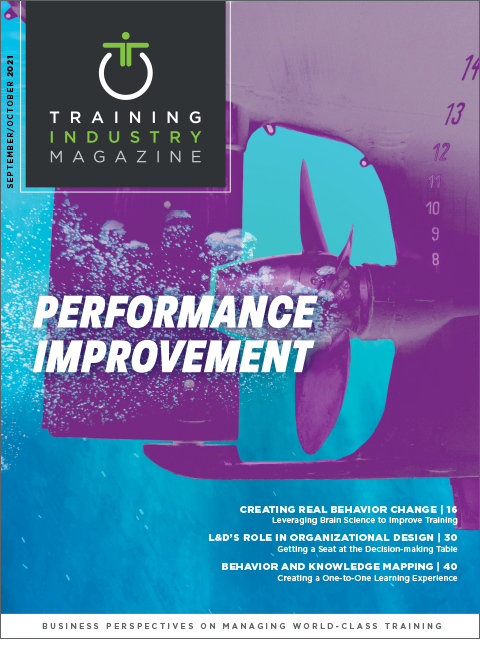
Published in Sept/Oct 2021
Everyone loves a good “two-for-the-price-of-one” deal. Perhaps that’s why experience-based learning is such a critical element of the L&D ecosystem. It allows people to transform (learn, grow and develop new skills) while they perform — making it the ultimate workplace “two-fer.”
Learning in the flow of work is an important dimension of many organizations’ development strategies. Whether facilitated through job shadowing, performance support tools or automated systems that offer automated content and coaching, it’s become increasingly popular given today’s workplace pressures. Leaders and employees appreciate opportunities to bring training to the trainee within the powerful context of their work.
Of all the workflow-embedded learning opportunities, experience-based development offers an important and distinctive benefit: Real-time contribution. When employees take on these experiences, they’re gaining new skills and abilities while giving back in the form of enhanced performance.
Not All Experiences are Created Equal
For an experience to meet the criteria of “development,” it can’t just be normal work — or more work. It must be intentional work: Work that has been specifically selected because it has the potential of help someone grow.
Meaningful, experience-based learning is also personalized and unique to the individual. Interestingly, two employees could take on the same experience, each with a different focus, and walk away with entirely different lessons. For instance, both Eli and Tomas assumed leadership of cross-functional teams. Eli used the opportunity to develop her collaboration and influencing skills, whereas Tomas’ focus broadened his understanding of the organization overall by learning about and getting to know employees from other departments and functions.
Setting Experiences (and Employees) Up for Learning
Realizing the benefits that are possible through intentional, personalized experiences, opportunities and assignments require a partnership between the line manager and employee. Managers who understand this engage actively before, during and after the development experience occurs to ensure the best possible outcomes.
Here’s a checklist to guide high-impact, experience-based learning:
Before
- Brainstorm activities that will support the person’s growth — from stretch assignments to special projects to attending meetings. Generate a range of options that connect back to their development goals and identify one that interests the employee.
- Clarify the goal of the experience. Crystalize a learning focus by asking: What will you know/be able to do as a result of this experience?
- Create a concrete (yet flexible) plan. Treat this experience just as you would any training and craft a plan that plots out the “what,” “how,” “who” and “by when” to ensure focus.
During
- Check in frequently. Even a three-minute “How’s it going?” conversation surfaces issues and offers encouragement.
- Recognize effort and highlight the learning. It’s easy to quickly become drawn into the business or performance dimension of this type of embedded, organic development. Help others remain focused on the “learning” part of “experience-based learning” with frequent pointers back to the development goals.
- Identify challenges. Learning by doing involves experimentation and bumping up against the unknown. Be an active partner in identifying the support and resources required for success.
After
- Debrief the experience to extract learning. Educational reformer John Dewey is frequently credited with saying, “We do not learn from experience … we learn from reflecting on experience.” Help employees engage in that reflection with a simple question like, “What did you learn?”
- Document the development. Treat experiences just like any other activity. Capture it in development documents, succession plans and skill inventories.
Efficiencies are the holy grail in today’s fast-paced workplace. Experience-based learning (when properly crafted) offers not just efficient but also value-driving development that allows people to transform while they perform.
